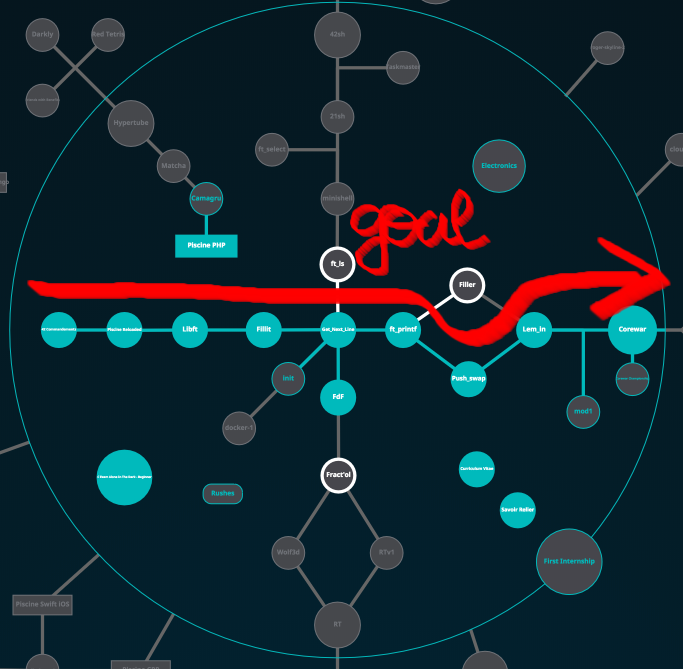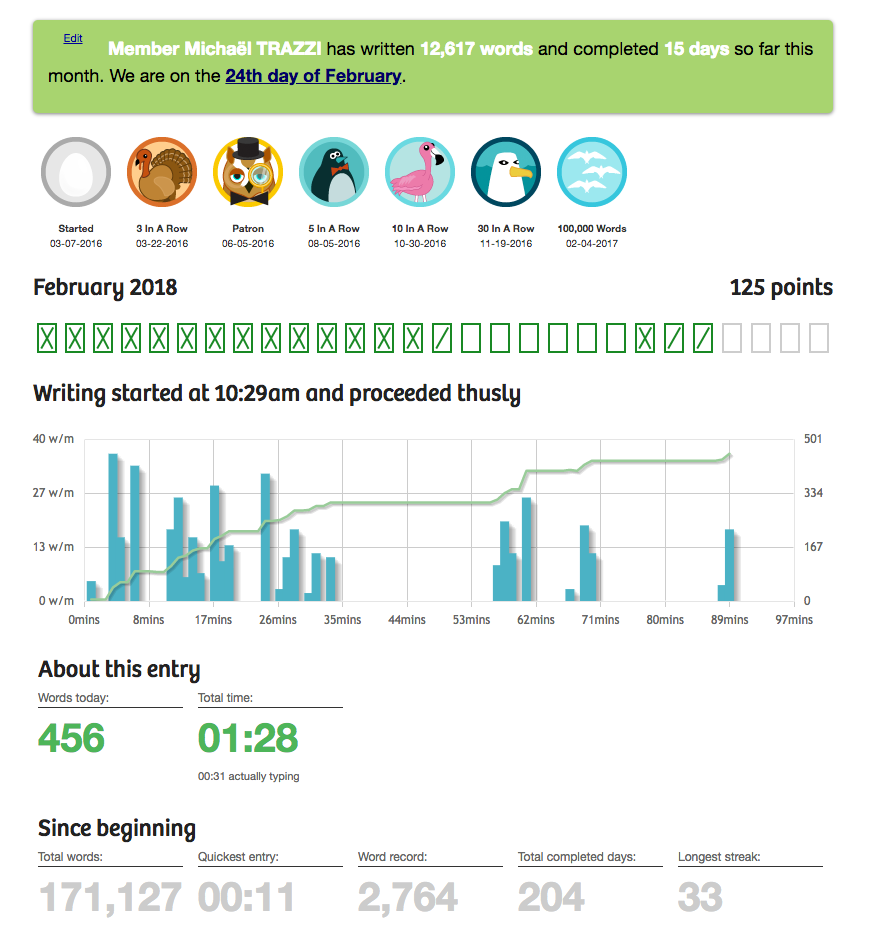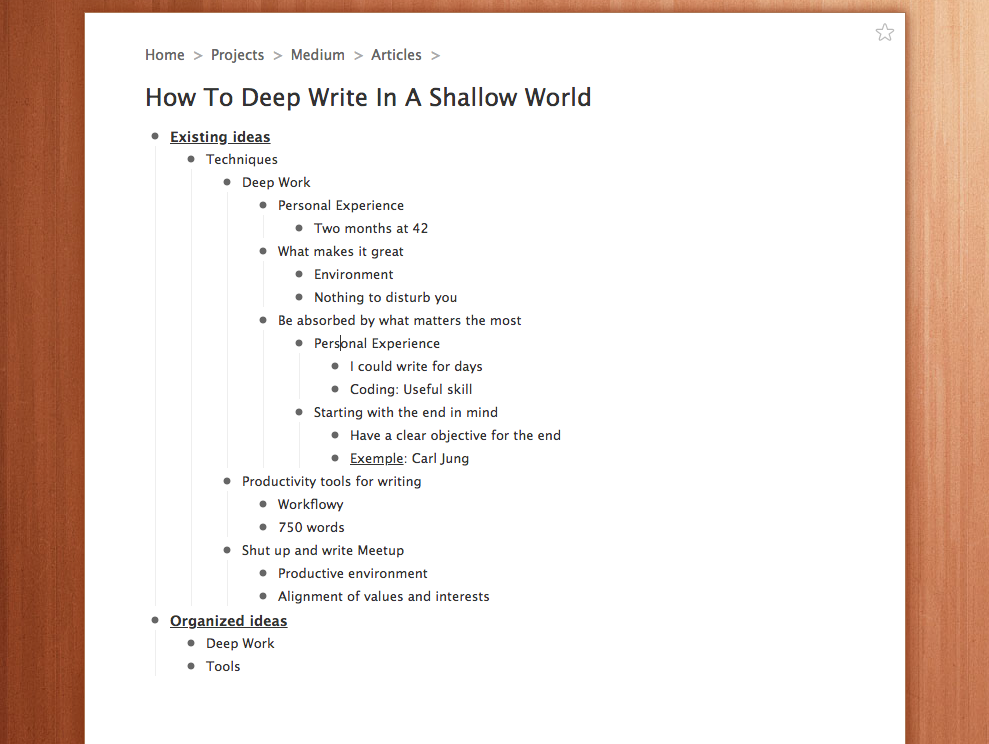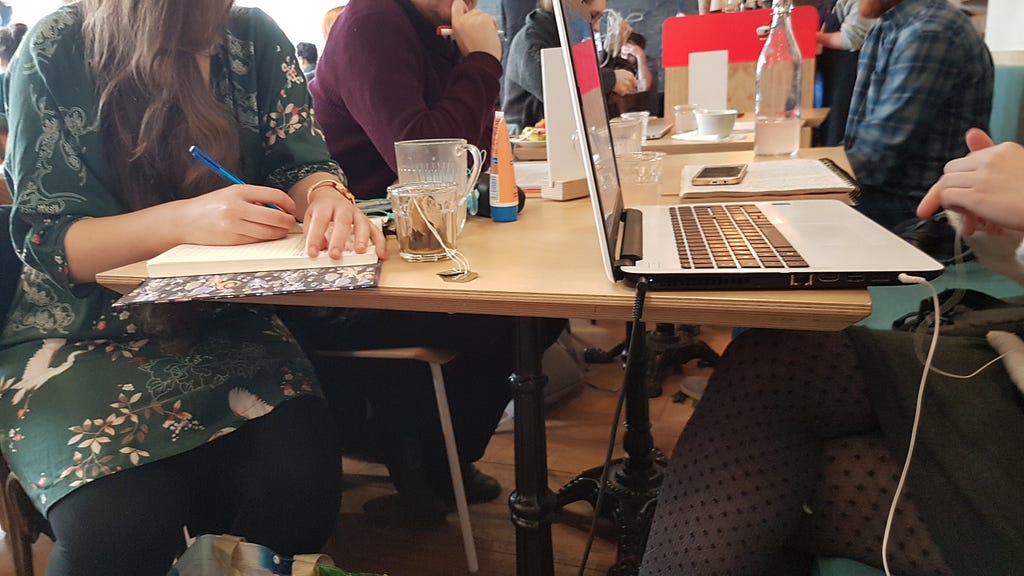Latest news about Bitcoin and all cryptocurrencies. Your daily crypto news habit.
 Source
Source
I was born in 1995. Yet, I am still not used to the internet. Despite all of the stereotypes, us Millennials weren’t born gifted in using digital tools to get things done: none of us were. In 2016, I started what I call Deep Writing, which is uninterrupted and focused Writing. Here are the keys of Deep Writing I discovered during my quest.
Deep Work
In Summer 2017, I had just been accepted at 42, a coding school in Paris open 24/7, and was striving to get the most out of it. Cal Newport’s book, Deep Work, pushed me to write, in two months, more lines of code than I had ever written in my entire life. Here is how he defines it:
“Deep work: Professional activities performed in a state of distraction-free concentration that push your cognitive capabilities to their limit.” [1] Source : https://www.usnews.com/news/articles/2016-09-22/new-computer-coding-program-boasts-no-courses-or-professors
Source : https://www.usnews.com/news/articles/2016-09-22/new-computer-coding-program-boasts-no-courses-or-professors
In July and August 2017, I went to this coding school every day and wrote thousands of lines of code from morning till evening.
When programming, most of the time is spent on debugging (some developers spend up to 90% on it). What helped me survive two months of marathon debugging was a meaningful environment: Whenever attempting Deep Work, the values of your environment must be aligned with the purpose of your labour.
The Swiss psychiatrist and psychoanalyst, Carl Jung, went as far as to build his own structure, the Bollingen Tower. He only visited this tower when he had to immerse himself in his work for days. Hence, his environment smelt hard work and was the perfect place for Deep Work.
“In the 1920s, at the same time that Jung was attempting to break away from the strictures of his mentor, Sigmund Freud, he began regular retreats to a rustic stone house he built in the woods outside the small town of Bollingen. When there, Jung would lock himself every morning into a minimally appointed room to write without interruption.” source: Deep Work
What drove Jung to occasional “ermite mode”, as Newport puts it, was that he had a precise meaningful work to execute. At that time, Jung needed to work efficiently and fast.
“If you’re Carl Jung and are engaged in an intellectual dogfight with Sigmund Freud’s supporters, you’ll likely have no trouble recognizing the importance of finding time to focus on your ideas.” source: Deep Work
Meaningful Endeavour
To go back to my hacking episode, I only had two months to work full-time at the coding school. In addition to that, I had to finish 9 projects in order to attain the “First Circle” and not get kicked out of the school. In other words, like Jung, I had a well-defined goal and slacking off was not an option.
 Screenshot from my “project graph” at school 42
Screenshot from my “project graph” at school 42
Handy Advice to Get You Started
Of course, in 2018, there are plenty of resources to help you be more focused. Here are the minimalistic tools I use to write effectively and without any interruption.
750words.com Screenshot from my 750words.com Dashboard
Screenshot from my 750words.com Dashboard
750words.com is a website I try to use everyday to get ideas out of my head. The principle is simple: you need to write 750 words every day. The point is that 750 words represent a lot of words. It strengthens your writing endurance and builds writing muscle. That’s why, whenever writing something less challenging (like only 300 words), it seems easy.
Moreover, in order to get your writing done, you need to bring back from your unconscious mind every idea your brain had thought of during the day. Thus, it reinforces the connections between your ideas and helps form long-term connections in the back of your head.
I also use it to write a draft about an idea in particular (e.g. the draft for this article). It forces me to consider every aspect of the subject I want to address.
Workflowy.com“WorkFlowy helps you break big ideas into manageable pieces, then focus on one piece at a time.” source: workflowy.com My organized ideas in workflowy.com
My organized ideas in workflowy.com
I use Workflowy for about everything. It’s a minimalist website with basic formatting (e.g. italic, bold, etc.) but tremendously powerful. The entirety of your notes are nested and organized in bullet points. It’s the perfect tool to organize your ideas, especially arranging arborescent thinking.
So now you got your draft done with 750words and your ideas organized with Workflowy. But how do you get your Deep Writing done?
The Shut Up And Write Meetup Writers working at the Shut Up and Write Meetup
Writers working at the Shut Up and Write Meetup
This morning, I was lucky enough to discover the Shut Up and Write Meetup. I had the privilege to write amongst other writers in a creative and challenging environment (some were finishing a book they have been working on for more than 10 years!). When you’re paying $4 per hour and surrounded by talented writers, you are Jung in his tower: it gets terribly difficult to loaf or check your social media.
Conclusion
To get your Deep Writing done, two requirements must be met. You need to be in a dedicated environment, and have a specific goal in mind. Three means to achieve your goal are: doing a quick draft with 750words, organizing your ideas with Workflowy and then wrap up everything in a Writing Meetup.
If this article was helpful to you then give it some claps 👏. You can follow me on Medium and Twitter. Responses welcome below.
How to Deep Write in a Shallow World was originally published in Hacker Noon on Medium, where people are continuing the conversation by highlighting and responding to this story.
Disclaimer
The views and opinions expressed in this article are solely those of the authors and do not reflect the views of Bitcoin Insider. Every investment and trading move involves risk - this is especially true for cryptocurrencies given their volatility. We strongly advise our readers to conduct their own research when making a decision.
